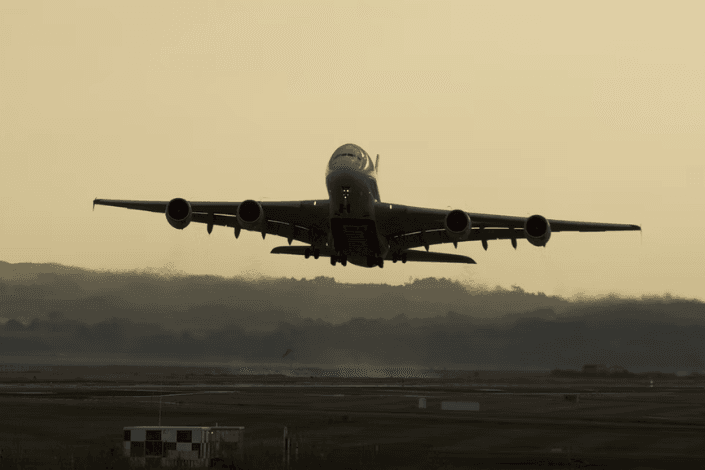Where travel agents earn, learn and save!
News / What happens when a plane goes around?
Go-arounds can occur for various reasons, including weather conditions, technical malfunctions, or air traffic control instructions

For passengers, it could be exciting or terrifying; for plane spotters, it could be the opportunity to capture 'the best' photo, but what about the crew and the aircraft itself? Let's understand what actually happens in a go-around.
A flight may be coming into land, and air traffic control instructs the aircraft to abort its planned arrival, or quite simply, strong gusts of winds might blow a plane off its final course towards the runway, which means for the safety of all onboard and on the ground, it's better for the pilots to 'regroup,' and try again.
While some scenarios could be weather-based or a directive from air traffic control, go-arounds can also occur due to engine or technical malfunctions, such as jammed landing wheels or another aircraft being where it shouldn't - in such situations, if not remedied, this could lead to disastrous consequences.
Pilot's liaising with Air Traffic Control
Firstly, a go-around can either be requested by the air traffic control tower or the pilots themselves. There are several reasons for a go-around to be undertaken, but it is generally safety-orientated. While they are a safety precaution, go-arounds are not only called during an emergency. From the air traffic control tower’s end, another aircraft may still be on the runway, or some debris may be left behind. Calling a go around in these cases is vital to ensure aircraft do not collide with one another or sustain impact damage.
On the pilot’s end, go-arounds are usually requested due to difficult weather conditions or an onboard technical issue. A recent example of this was Emirates flight EK412, battling solid winds upon arrival at Christchurch International Airport. It caused the aircraft to abort its landing into Garden City and circled for around two hours above Canterbury before attempting to land in the opposite direction.
On the pilot’s end, go-arounds are usually requested due to difficult weather conditions or an onboard technical issue. A recent example of this was Emirates flight EK412, battling solid winds upon arrival at Christchurch International Airport. It caused the aircraft to abort its landing into Garden City and circled for around two hours above Canterbury before attempting to land in the opposite direction.
Challenging weather or limited visibility can test any pilot's capability. A go-around is usually the safest option for extreme incidents, allowing the crew to reset and try again. In some situations, such as heavy rain or snow, the team might have attempted a landing and decided it was deemed too unsafe at the last minute. They choose to abort the landing and circle the airport for some time for conditions to improve.
In other scenarios, this could be that an aircraft has been approved for landing. However, another pilot got their wires crossed and made their way onto the runway; unfortunately, these incidents are common, such as an Alaska Airlines flight doing a go-around when they spotted a Southwest Airlines flight preparing for departure on their allocated runway.
What happens next?
When these incidents occur, the pilot will apply full throttle and attempt to climb away from the airport and is usually instructed to rejoin the queue of aircraft for landing. Faults with mechanics and preparation for a safe arrival may take a bit longer, and in some instances, if a resolution cannot be found, an emergency landing could be requested.
It is estimated that a go-around happens in 1 to 3 of every 1,000 landings. While these can vary depending on seasons, weather, and mechanics, the decision not to facilitate a go-around could increase the number of aircraft accidents. Go-arounds can sometimes not be an option, such as if the aircraft was low on fuel or had a medical emergency onboard, where getting the aircraft on the ground is paramount.
Airline requirements
For most airlines, a standard set of landing and take-off procedures are in place, so should any of these requirements be unable to be met and produce a safe landing for aircraft, passengers, and crew, a go-around may be requested. Fortunately, most modern aircraft have auto thrust features that engage when a go-around is required and will aid the pilots in the procedure.
Additional requirements for go-arounds could be listed in the aircraft manufacturers guidebook (which will need to be approved by local regulators); however, in most instances, it's the pilot or ATC using their initiative and making informed decisions to ensure the aircraft can land safely.











